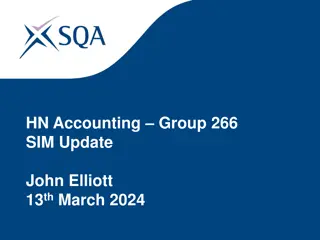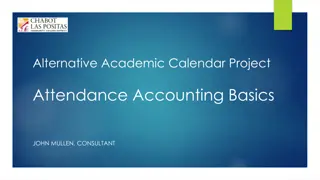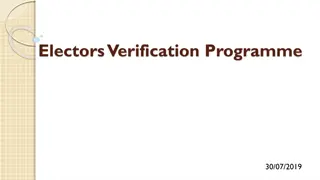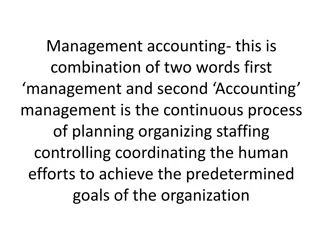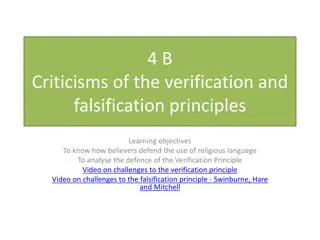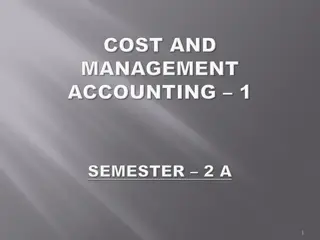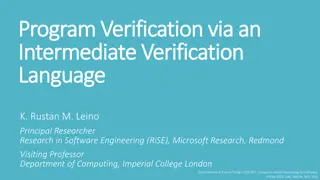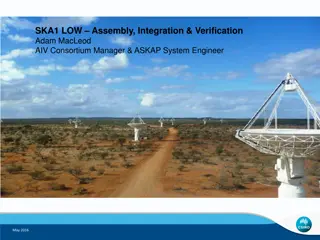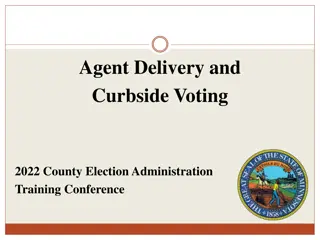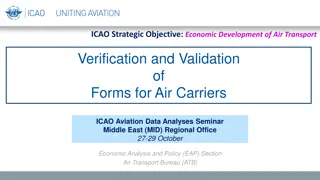Understanding Vouching and Verification in Accounting
Vouching and verification are essential processes in auditing to ensure the accuracy of transactions recorded in the books of accounts. Vouchers play a crucial role as documentary evidence supporting entries, classified into primary and secondary types. Examples and types of vouchers are explained in detail, emphasizing their significance in financial record-keeping.
Download Presentation

Please find below an Image/Link to download the presentation.
The content on the website is provided AS IS for your information and personal use only. It may not be sold, licensed, or shared on other websites without obtaining consent from the author. Download presentation by click this link. If you encounter any issues during the download, it is possible that the publisher has removed the file from their server.
E N D
Presentation Transcript
VOUCHING & VERIFICATION
Meaning: Vouching refers to the checking by the auditor of documentary evidence supporting and substantiating a transaction by the auditor. Vouching is a careful examination of all original evidences, such as invoices, bills, receipts, requisition forms, quotations, statements, letters, orders, agreements, minutes, contracts etc with a view to ascertaining the accuracy of the entries recorded in the books of accounts. Definition: Taylor and Perry define vouching as, the examination of the evidences offered in substantiation of the entries in the books, including such examination of proof, so far as possible, that no entries have been omitted from the books .
Vouchers: A voucher is documentary evidence in support of a transaction recorded in the books of account. It is a written document or paper in support of an entry in the books of account. It is only through vouchers that the transactions are recorded in the books of account. Arthur W.Halmes defines a voucher as any documentary evidence in support of a transaction . Thus, voucher is a document which evidences a transaction or an entry in the books of account.
Examples of vouchers: Cash receipts: Counterfoils of receipts issued, carbon copies of receipts, contracts, correspondence and letters from debtors confirming the balance of their accounts. Cash payments: Original receipts from the payees, invoices, cash memos, bills, demand notes, salary books, wage sheets, contracts etc. Purchases: Invoices, goods inward book, copies of orders sent, cash memos, bought notes, correspondence etc. Sales: Copies of invoices, copies of orders received, cash memos, sold notes, goods outward book etc. Others: Debit notes, and credit notes, minute books of meetings of directors or share holders.
Types of vouchers Vouchers are mainly of two types. They are a) Primary vouchers and b) Secondary vouchers. Primary vouchers: A primary voucher is written evidence in original. Purchase invoices, cash memos for goods purchased for cash, bank statements, confirmation letters received from debtors and creditors for the balance etc are a few examples of primary vouchers. Secondary or Collateral vouchers: When the original vouchers are not available, copies of original vouchers are produced in support of the entries in the books of account. Sometimes subsidiary evidences are made available with a view to removing suspicion and satisfying the auditor. Such vouchers are called secondary or collateral vouchers. Carbon copies of sales invoices, copies of receipts issued to debtors, xerox copies of agreements, sale deeds etc are few examples of secondary vouchers.
Points to be noted while examining vouchers: As the vouchers constitute a very valuable link between the transactions and their entries in the books of account, each voucher should be examined by the auditor with great care and caution. All the vouchers should be consecutively numbered, arranged serially in the order of entries made in the books of account and are properly filed. The auditor should see that the vouchers bear the same number as given to the entries in the books of account. This would help the auditor to correlate a voucher with the relevant entry in the books.
He should see that each voucher is addressed to the client s organization at its normal business address. He should see that every voucher is properly dated and the date correspond to the date of the transaction concerned and also the period under audit. After the inspection of the vouchers, the vouchers should be cancelled by the auditor by means of a rubber stamp or by special type of tick marks so that they may not be produced again.
The auditor should see that every voucher is certified as correct by a responsible official who should put down his signature on it. He should see that the amount of each voucher is written both in words and figures. If there is any difference between the two, he should investigate about such difference. He should accept only those vouchers which are in the printed form. In case any vouchers are issued on ordinary pieces of paper, he should get such vouchers duly certified by a responsible official. He should see that every voucher, which is a receipt for cash payment of Rs.500 or more bears a revenue stamp of rupee one.
He should see that any alteration made in a voucher has been duly confirmed by the maker and responsible official issuing the voucher by their signatures. He should not accept any vouchers which contain alterations made by over writing or erasing without any confirmation by the responsible official. If any explanation or clarification is required relating to any voucher, the same should be noted in the audit note book. He should not usually take the help of any members of the staff of the client while vouching the entries and checking the vouchers. There may be certain payments for which vouchers may not be available, eg. Wages, petty expenses etc. such payments should be checked with the wage sheets and petty cash book.
If there are any missing vouchers, a list of such missing vouchers should be prepared by the auditor and duplicates of such missing vouchers should not be accepted by him as a matter of routine. The auditor should seek reasons and explanation for the loss of vouchers from the client in writing. In any case, if the auditor is not satisfied with the reasons and explanation for any missing vouchers, he may state the same in his report. While examining vouchers, the auditor should see that they are properly entered in the proper books of account. As far as possible, the work of vouching relating to a particular period of a set of books should be completed in one continuous sitting.


